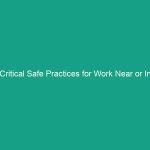Introduction
Good morning team,
Today, we are going to discuss a crucial topic that affects not only our productivity but also our Safety on the job: Essential Equipment Maintenance Schedules: Following Manufacturer Recommendations. Understanding and adhering to these schedules is vital to ensure that our equipment operates safely and efficiently.
Why is this topic important? Well, regular maintenance helps prevent equipment failures that can lead to accidents, downtime, and costly repairs. By following the manufacturer’s recommendations, we can minimize risks and create a safer work Environment.
Understanding Essential Equipment Maintenance Schedules
Essential equipment maintenance schedules refer to the planned timelines and Procedures for inspecting, servicing, and repairing equipment as outlined by the manufacturer. These schedules are designed to ensure that machinery operates correctly and safely, thereby reducing the likelihood of accidents.
Following these schedules impacts our daily operations significantly. For example, machines that are well-maintained are less likely to break down unexpectedly, which can disrupt workflows and lead to Safety Hazards. A common misconception is that maintenance can be skipped or postponed if equipment seems to be functioning well. However, preventive maintenance is critical for long-term equipment reliability and safety.
Key Hazards, Risks, and Safety Considerations
Neglecting equipment maintenance can lead to several hazards and risks, including:
- Equipment Failure: Machinery that is not regularly serviced may fail, leading to accidents.
- Injuries: Malfunctioning equipment can cause serious injuries to operators and nearby workers.
- Increased Downtime: Equipment breakdowns can lead to production delays and increased costs.
- Compliance Issues: Failing to comply with maintenance schedules can result in penalties and legal issues.
The real-world consequences of ignoring these safety protocols can be severe. For instance, in 2019, a construction site reported an injury due to a crane malfunction that could have been prevented with regular maintenance checks. This incident not only affected the injured worker but also the entire project timeline.
Best Practices, Procedures, & Actionable Advice
To ensure we are following essential equipment maintenance schedules effectively, here are some Best Practices:
1. Know Your Equipment
Familiarize yourself with the equipment you operate and its specific maintenance requirements. Always refer to the manufacturer’s manual for guidelines.
2. Create a Maintenance Log
Keep a detailed log of all maintenance activities, including dates, performed tasks, and any observations. This log will help you track when the next maintenance is due.
3. Schedule Regular Inspections
Adhere to the maintenance schedule provided by the manufacturer. Set reminders for routine checks and ensure they are performed on time.
4. Train Employees
Ensure that all employees are trained on the importance of maintenance schedules and how to properly perform routine checks. Encourage them to report any abnormalities or concerns.
5. Use Quality Parts and Services
When replacement parts or services are needed, always use quality components recommended by the manufacturer. This ensures compatibility and reliability.
Real-Life Example
Consider a scenario where a team failed to follow the maintenance schedule for a forklift. As a result, the brakes malfunctioned, causing an accident that injured a worker. This incident could have been avoided with proper adherence to maintenance protocols, highlighting the importance of these practices.
Regulations, Standards, and Compliance
Compliance with safety Regulations is not just a legal requirement; it is essential for protecting our team. Relevant Standards such as OSHA regulations dictate the need for regular maintenance. By adhering to these standards, we not only ensure safety but also protect our organization from potential legal actions.
Remember, when equipment is well-maintained, it operates more efficiently, reducing the risk of accidents and injuries. Compliance is critical; it safeguards our workforce and enhances overall productivity.
Employee Engagement & Discussion
Let’s open the floor for discussion. What safety challenges have you encountered related to equipment maintenance? Have you faced situations where a lack of maintenance led to issues on the job? Sharing our experiences can help us learn from one another and implement better practices moving forward.
Conclusion & Key Takeaways
In conclusion, following essential equipment maintenance schedules as recommended by manufacturers is crucial for Workplace Safety. Remember the following key points:
- Understand the importance of maintenance schedules.
- Identify and mitigate risks associated with neglected maintenance.
- Implement Best Practices for effective maintenance.
- Stay compliant with industry regulations.
By prioritizing safety and equipment maintenance, we can create a more secure work environment for everyone. Thank you for your attention and your commitment to maintaining a safe workplace. Let’s keep safety at the forefront of everything we do!


